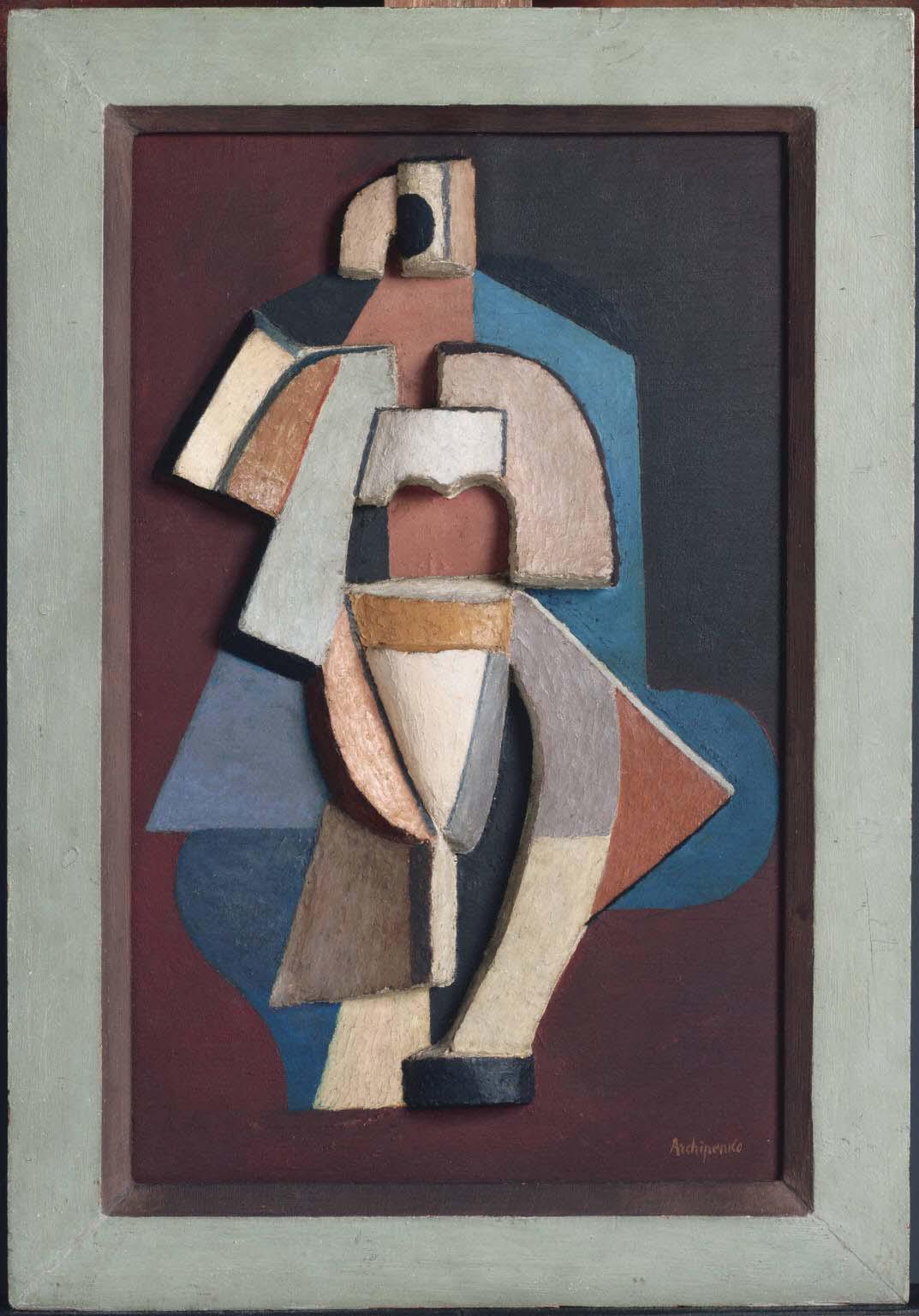Standing Woman
Alexander Archipenko ( 1920 )

Alexander Archipenko’s Standing Woman is a prime example of his sculpto-paintings. Invented in 1912, sculpto-painting involves techniques and principles similar to those used in the cubist collages and constructions of Braque and Picasso. Starting with a wood support, Archipenko added to it a combination of materials, including papier-mâché, plaster, glass, metal, and, occasionally, mirrors. The relief was then painted and hung on a wall. Standing Woman is typical of the sculpto-paintings executed between 1916 and 1920 when Archipenko simplified his compositions and reduced the variety of materials employed.
Archipenko’s goal was to blur the lines between the two-dimensional picture plane of the canvas and the three-dimensionality of his materials; the painting’s illusionism and flatness is contradicted by an outward projection into real space, while sculpture’s three-dimensionality is reduced to its most minimal expression, demanding to be experienced frontally rather than from multiple vantage points. He further enhances the complexity of this piece by juxtaposing bold, flat panels of complimentary colors, enriching the work’s vibrancy. The resulting tension between a recognizable subject and the work’s abstract formal qualities make the viewing process particularly dynamic.